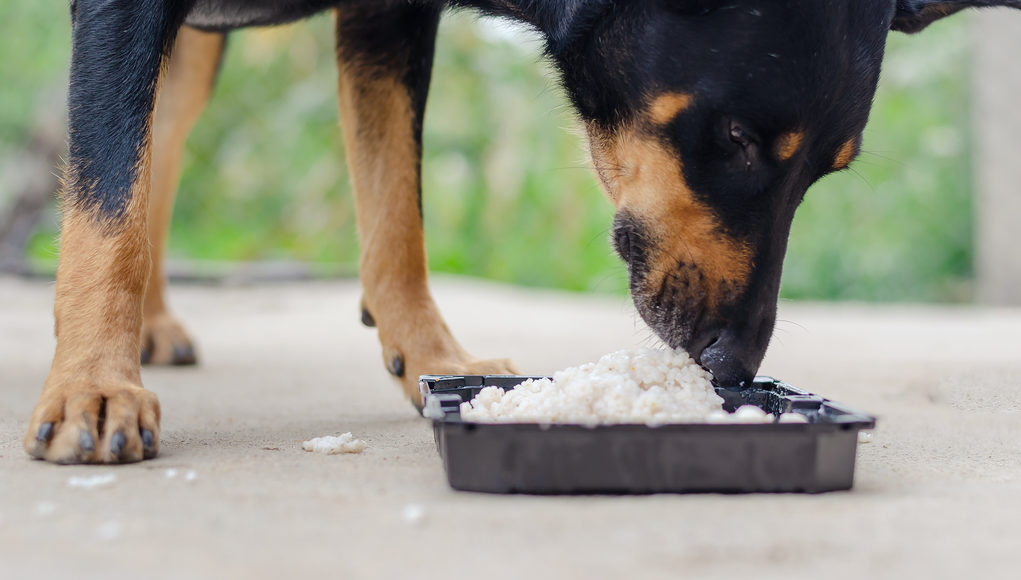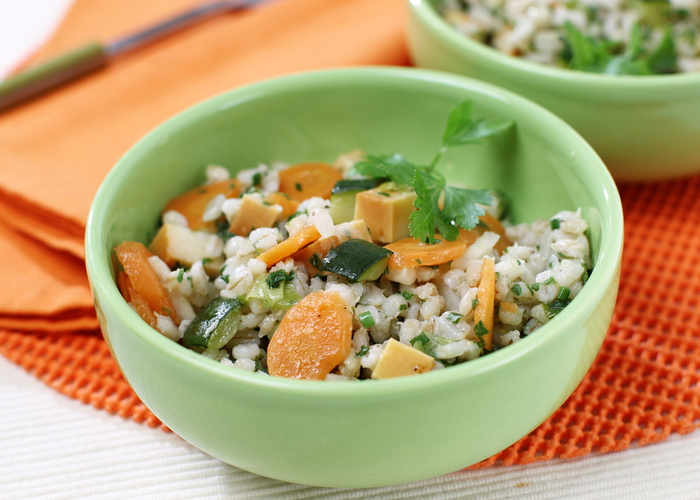Table of Contents
- Three of the Best Rice to Feed to Your Dogs
- Healthy Benefits of Feeding Your Dog with Rice
- Best Rice to Feed to Your Dog with Upset Stomach
- How Much Rice to Feed to Your Dog?
- What Factors to Consider When Feeding Rice to Your Dog?
- Other Alternative to Feed to Your Dog Instead of Rice
- Is It Healthy to Feed Your Dog Rice Final Thoughts
Finding the best rice to feed to your dog can be difficult, right?
Pet owners often question whether this type of rice is healthy for their dog or can their dog eat rice, and so on.
This article will talk about three of the best rice to feed to your dog, along with its health benefits.
Three of the Best Rice to Feed to Your Dogs
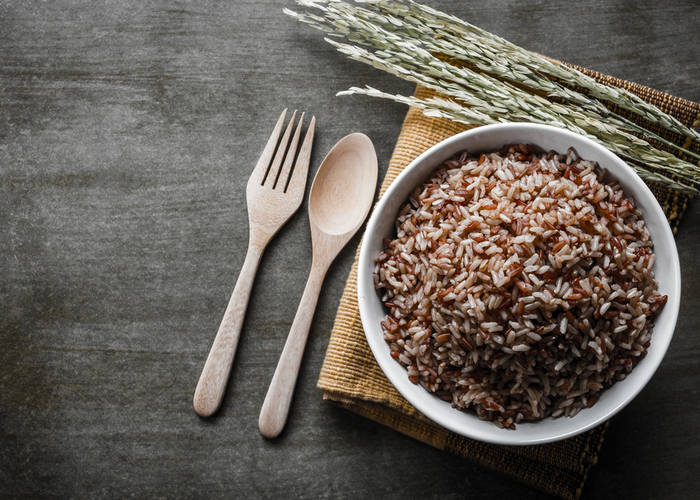
Brown Rice
Brown rice is whole grain rice with outer layer bran that gives out the color. It contains more vitamins and minerals than other types of rice.
Brown rice has high insoluble fiber that helps prevent different types of cancers. This fiber is rich in vitamin D and B, suitable for the heart.
This type of rice also contains other nutrients like calcium, riboflavin, and iron that balance the dog's healthy immune system.
If your dog doesn't have any gastrointestinal illness, brown rice is the best option to feed to your dog.
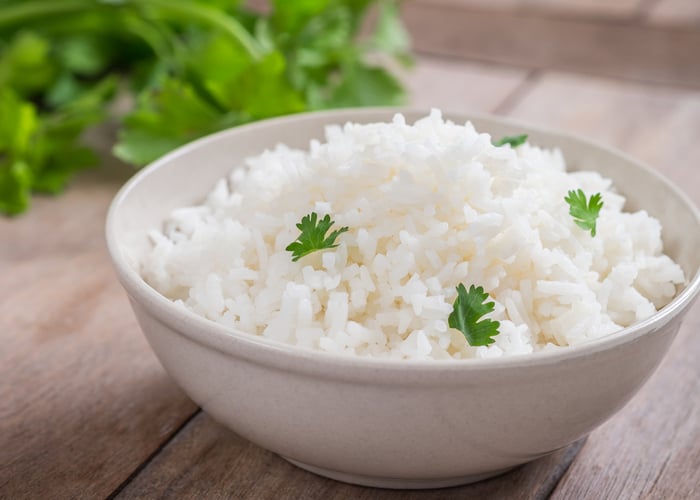
White Rice
White rice undergoes a process to remove parts, including the bran layer, to make it softer to chew. The more refined the rice, the easier it is to digest.
White rice is also a great source of carbohydrates (starch) and can help soothe an upset stomach.
The starch doesn't immediately digest until it arrives in the small intestines and feeds good bacteria that help regulate bowel movements.
It has a high glycemic index, with 1/3 of its cup containing 70 calories. A fast-burning carbohydrate that raises blood sugar levels.
White rice is not a good option for dogs with diabetes or being overweight. The same goes for dogs with yeast issues or candida.
White rice has lower nutrient content than brown rice.
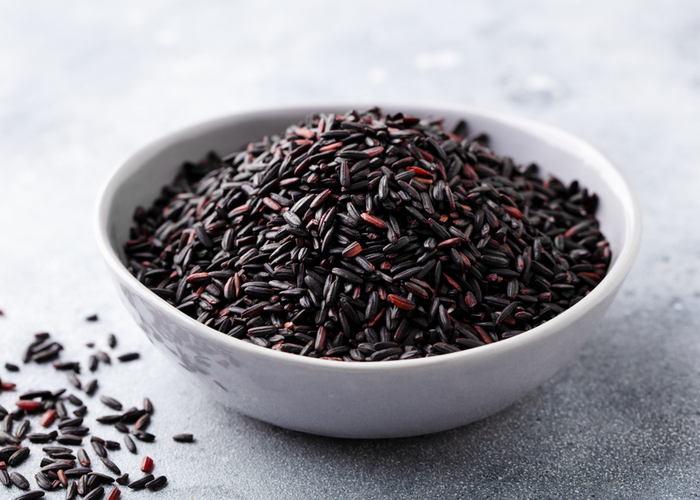
Wild Rice
Wild rice is the most nutritious rice rich in fiber and antioxidants.
Specifically, wild rice came from another species of plants and is safe for dogs to eat. Wild rice is best fed to dogs with no added spices or seasonings.
Dogs love the nutty flavor of this rice, and its nutrient content is the same as brown rice.
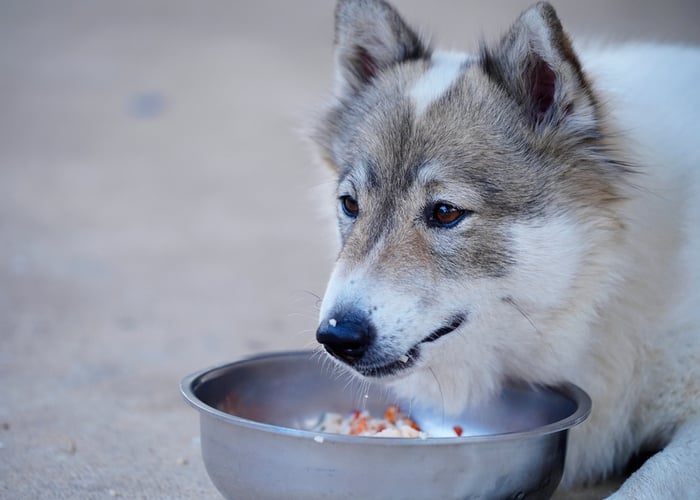
Healthy Benefits of Feeding Your Dog with Rice
Rice has been one of the ingredients of some commercial dog food. It's a good source of carbohydrates that boosts energy in the body.
Since rice is a carbohydrate, most people don't consider it nutritious. But rice can also provide many health benefits, including:
- Reduction of cholesterol level
- Low in fat
- Low sodium content
- Antioxidants for protection against diseases and dysfunctions
- High levels of calcium, phosphorus, and vitamin D
- Relief in the gastrointestinal
- Feeds good bacteria in the gut
- Regulation of bowel movement
- Fiber for improving digestion
As for brown and wild rice that is rich in vitamins and minerals, it's the healthiest rice to choose to add to your dog's diet. Brown and wild rice both contains:
- Vitamin D, B1, and B6 for dog's heart and metabolism
- Niacin for healthy skin, nervous system, and digestion
- Calcium for strong bones
- Phosphorus that works with calcium
- Thiamine that supports cell production
- Selenium for thyroid function, reproduction, and protection of cells from damage
- Magnesium for movement and energy production
- Manganese that protects dogs from free radicals
Rice does not only give out a healthy body, but it also helps dogs heal from gastrointestinal diseases.
How to Safely Feed Your Dog with Rice?
When you start giving rice to your dog with your vet's approval, you should cook it in water alone. Do not add salts, spices, oils, butter, or stock.
Always make sure that the cooked rice has cooled down before feeding it to your dog.
Also, be aware that rice should not form the majority of your dog's diet. Avoid overfeeding your dog with rice, which can lead to canine obesity.
Lastly, most vet recommends feeding white rice to your dog as this is easier to digest than brown rice.
What Should You Avoid?
It may be best to feed your dog with rice, but you must be extra cautious to avoid certain health conditions associated with giving rice to your put.
- Do not add spices, seasonings, or butter to the rice.
- Do not add salt.
- No additional ingredients like onions and garlic. These are toxic to dogs.
Rice is suitable for dogs but be aware of adding ingredients that may put your pet's life at risk.
RELATED ARTICLE: Best Homemade Dog Food Recipe with Chicken and Rice
Best Rice to Feed to Your Dog with Upset Stomach
White rice has lower nutritional value than brown rice, but its blandness makes it suitable for dogs with upset stomachs.
Oils, butter, spices, and seasonings are some of the reasons for the irritation in your dog's stomach.
To prevent further health complications in your pet, stick with plain boiled chicken and rice.
What Kind of White Rice to Feed Your Dog with Diarrhea
If your dog has diarrhea, bring a fecal sample to your veterinarian to inspect for signs of intestinal parasites.
After fasting your dog for 24 hours, begin feeding him with a combination of boiled white meat chicken (skin, fat, and water removed) and cooked long-grain white rice. The ratio of rice to chicken should be 2:1.
RELATED ARTICLE: What to Feed a Dog with Upset Stomach
How Much Rice to Feed to Your Dog?
Carbohydrates, protein, fat, water, vitamins, and minerals are what compromises a dog's balanced diet.
Rice can only occupy 10% of the dog's daily calorie intake. If you give them more than that amount, you'll be risking your dogs with diabetes and weight gain.
Large dog breeds can eat about 1/3 cup of rice two to three times a week. Smaller dog breeds need less than that.
Remember that this recommended serving is for dogs with a balanced diet with rice served as a treat or an added ingredient.
Can You Feed Your Dog with Rice Every day?
You can feed your dog with rice every day but only in moderation. Giving rice to your dog is through abiding by the treat rule wherein the dog's daily treat intake is only 10% of his daily calorie intake.
By feeding a small quantity of rice, you can assure that your dog can have all the health benefits from the rice without gaining much weight.
Can Dogs Digest Rice?
White rice is easy to digest for dogs as this are softer to chew. It also helps their digestive system relax and regain balance to eat their regular kibble again.
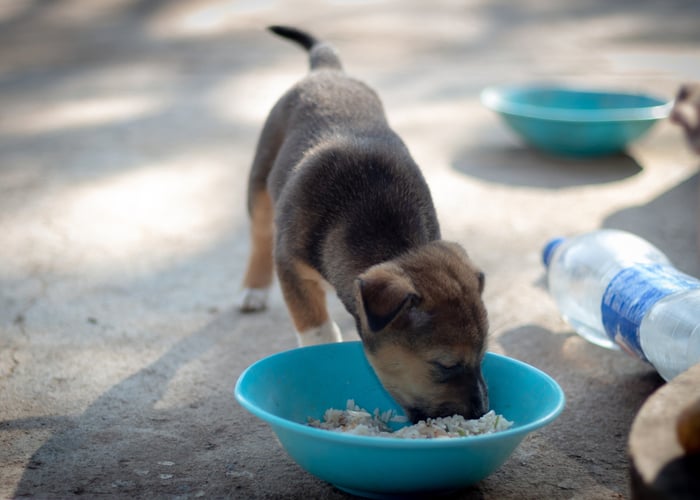
What Factors to Consider When Feeding Rice to Your Dog?
Breed
Small dog breeds have a higher metabolic rate compared to larger dogs. However, larger dogs require higher nutritional needs.
With this, large dog breeds need more carbohydrates, protein, and fiber in their meal diet.
Age
Age is an essential factor to consider when feeding rice to your dog. The proper amount of nutrition is required to meet your dog's growth requirement and for its immune system to function well.
Puppies need to have the proper nutrition to have a better immune system.
As puppies enter adolescence, a transition occurs from milk to solid food because puppies grow stable teeth and limbs.
During this stage, it's essential to have your puppy drink lots of water and eat food rich in proteins and carbohydrates for healthy growth.
When dogs enter the adult stage, reduce their carbohydrates and protein intake to prevent overweight.
Weight
Consuming more carbohydrates than the required amount for your dog may lead to obesity.
If you are already feeding your commercial dog food, avoid adding rice because most commercial food contains carbohydrates.
As long as your dog is at its most healthy state, it's okay to add rice to his meal.
Allergies
Dogs can be allergic to rice. Watch out for any signs of reaction when feeding your dog with rice, e.g., hair loss and excessive itching.
Also, observe for possible hotspots. These spots are warmer than the rest of your dog's body, and you can locate these spots in the sides or belly.
If you notice these reactions and hotspots, immediately stop feeding your dog rice, especially if this is not part of their regular diet.
Feeding Time
It would be best to have a consistent feeding time for your dog to help work up his appetite.
Not only does this allows your dog to know when he is getting his food, but it also prevents overweight.
RELATED ARTICLE: How to Feed Dogs with Food Allergies
Other Alternative to Feed to Your Dog Instead of Rice
When dogs love to go on a diet rich in protein and fat, you may want to add a carbohydrate source. You can try these alternatives if your dog dislikes rice:
- Barley
- Bread
- Potatoes
- Oats
- Corn
- Chickpeas
If you decide to feed your dog with new food, always consult your veterinarian about whether they are good to add to your dog's meal.
Some food may exhibit reactions on your dog's health, which disregards the health benefits of rice.
Is It Healthy to Feed Your Dog Rice Final Thoughts
It's completely safe to feed your dogs with white, brown, or wild rice if they are not allergic to it.
In general, serving rice to your dog is healthy, provided that it should be plain with no added seasonings or fats.
This grain provides lots of carbohydrates that relieve a dog's upset stomach or sickening diarrhea. It is also a digestible food that assists your dog's immune system with probiotic properties.
Despite being healthy, moderation is a must when feeding rice to your dogs. Also, make sure to serve your dogs with enough nutrients to cater to their nutritional needs.
Always consult your veterinarian for any change or addition to your dog's diet.


